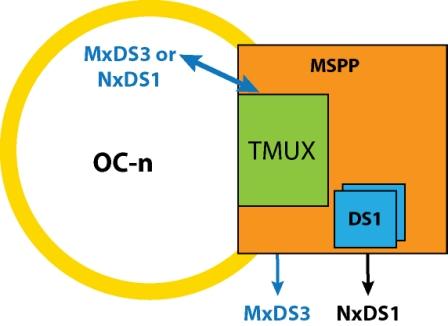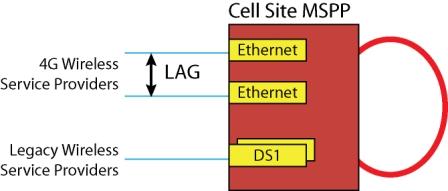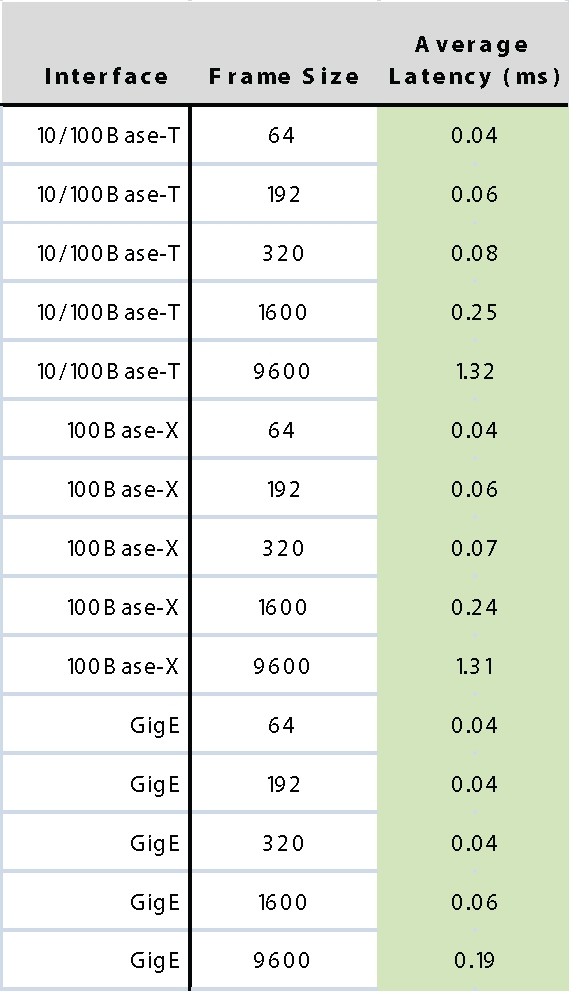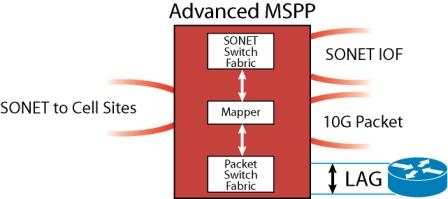This article originally appeared in the November 2010 issue of NGN.
Current 2G and 3G fiber-fed mobile backhaul networks use highly reliable SONET network elements to transport DS1 services from cell towers to MSCs effectively. Service providers are using OC-3 and OC-12 circuits to interconnect multiple cell towers in a UPSR, providing non-service-affecting site scalability and survivability.
Network element hardware and power sources are fully redundant. Network element power supplies are distributed on individual cards and fed over redundant power buses to eliminate any single point of failure, yielding 99.999 percent availability.
Scaling the cell tower access capacity adds DS1s until an economical breakpoint is reached relative to DS3 tariff pricing. Based on DS3 tariffs, a crossover point of five to seven DS1s justifies a DS3 lease. To facilitate DS3 service access, service providers will add M13 multiplexer functionality to the optical multiplexer using an external M13 network element or, if using an advanced MSPP, will install a transmux card emulating the M13.
Figure 1: Transmux DS1 Grooming to DS3 Over OC-n
The transmux card grooms the DS1s into a DS3 at the access point, satisfying the DS3 tariff while providing an economic advantage of 28 DS1 capacity for the price of five to seven. Once groomed, an advanced MSPP will transport the DS3 directly over the system bus to the OC-n optics, further saving capital expense and additional equipment to break out and remultiplex the DS3.
As 4G technology becomes available, wireless service providers will upgrade their networks for WiMAX (News - Alert) and LTE. Use of 4G radios at cell tower sites requires a transition from DS1 to Ethernet interfaces for backhaul. OC-n rates at cell sites typically scale to OC-48 once Ethernet traffic is added. Wireless service providers will transition their equipment over the course of the next several years. Therefore, the wireline service providers must offer both DS1service for legacy providers and service-aware Ethernet for WiMAX/LTE (News - Alert) upgraded providers.
Figure 2: MSPP at Cell Site with LAG and DS1
Over time, DS1 demand will convert to Ethernet, but that transition period is unclear. To reduce risk, provide flexibility and maintain installed base investment, wireline service providers will implement a platform capable of supporting both traditional TDM and service-aware Ethernet through scaling, using GFP-F plug-in cards as needed. Otherwise, wireline service providers must install new Ethernet-centric equipment at cell towers where footprint is at a premium, increasing both capital and operational expenses.
The 4G cell site contains a mix of CIR and EIR services and signals to be transported to the MSC (News - Alert). These services may include VoIP, streaming video, Internet data and telemetry signals. Wireless service providers may use an L2A to efficiently consolidate these signals at the cell site using various classes of service and statistical multiplexing. The consolidated L2A is the service port to be backhauled. Since Ethernet traffic at the cell site is policed using the L2A, the MSPP service port will be all CIR service and transported over an EVC. The EVC may be duplicated by the wireless service provider at the L2A. The duplicated EVCs are diversely mapped across the WAN facility by the wireline service provider and service multiplexed at the MSC.
Figure 3: Cell Site MSPP with L2A Interconnect
The MSPP service port interface should offer rate-limiting CIR to backhaul the L2A traffic efficiently. Maintaining 99.999 percent reliability for Ethernet service at the cell site requires a similar level of redundancy to the DS1 hardware method. Use of 802.3ad [3] LAG between the L2A and two service cards within the micro packet-OTN ensures Ethernet resiliency, effectively providing a 1:1 hardware redundancy, as illustrated in Figure 3. To ensure maximum end-to-end performance over the WAN, connection-oriented Ethernet techniques are used within the MSPP or micro packet ONP. COE offers deterministic operation, consistently delivering Ethernet services with the lowest latency, jitter and frame loss. Ethernet service delivered using COE provides the same performance whether the network has few or many network elements and regardless of WAN facility fault protection switching.
Maintaining SONET performance at brownfield sites provides carrier-class service capabilities in the access network. Legacy TDM services are undisturbed, whereas circuit emulation using current techniques over Layer 2/Layer 3 facilities oversubscribes network bandwidth and has unpredictably high latency and jitter. Ethernet CIR traffic over SONET provides COE operation using GFP-F, and realizes one-way latency in the order of 1.3 milliseconds (worst case) using jumbo frames, as shown in Figure 4. Jitter and frame loss are less than 125 microseconds and are therefore nonexistent, due to the predictable time-based nature of SONET.
Figure 4: Table of Latency Rates for Ethernet CIR Traffic over SONET using GFP-F
Greenfield networks used for 4G service use micro packet ONPs at the cell site to transport data services using COE over OC-48, point-to-point LAG or G.8031 VLAN protected ring topologies up to 10 GbE WAN facilities. COE over OC-48 offers almost a 2.5 bandwidth increase over GbE access multiplexers.
At the MSC, the MSPP TDM traffic is aggregated to a DCS using DS3 or OC-n interconnects. Ethernet traffic is service-multiplexed providing EVPL connectivity as per MEF (News - Alert)-9 from the cell towers. Maintaining multi-customer service separation and preventing multi-tag duplication in mixed in- and out-of-franchise networks is solved using 802.1Q VLAN tagging offering pushed, popped or swapped tag treatment.
Odd and even EVCs are service multiplexed on separate ports in dual EVC architectures. These separate service multiplexed EVC ports presented from the wireline service provides packet ONP to the wireless service provider using 802.3ad LAG between two cards of the packet ONP maintaining high service reliability just as is used at cell sites.
Figure 5: Advanced MSPP Dual Fabric and Mapper
Packet ONPs at the hub and MSC sites have both TDM and packet switch fabric to optimize traffic treatment with mapping processors to translate between the two. The mapping processor provides a smooth transition for brownfield sites using SONET to and from packet facilities. This smooth transition allows packet ONPs to operate in a SONET network and terminate packet traffic, as well as forwarding to higher-order networks using 10 Gbps facilities. The higher-order network provision enables gateway operation for future packet-based network applications.
Figure 6: Next-Generation Mobile Backhaul Network
Joseph V. Mocerino is principal product marketing manager at Fujitsu (News - Alert) Network Communications Inc. (www.fujitsu.com/us/services/telecom /).
TMCnet publishes expert commentary on various telecommunications, IT, call center, CRM and other technology-related topics. Are you an expert in one of these fields, and interested in having your perspective published on a site that gets several million unique visitors each month? Get in touch.
Edited by Stefania Viscusi











